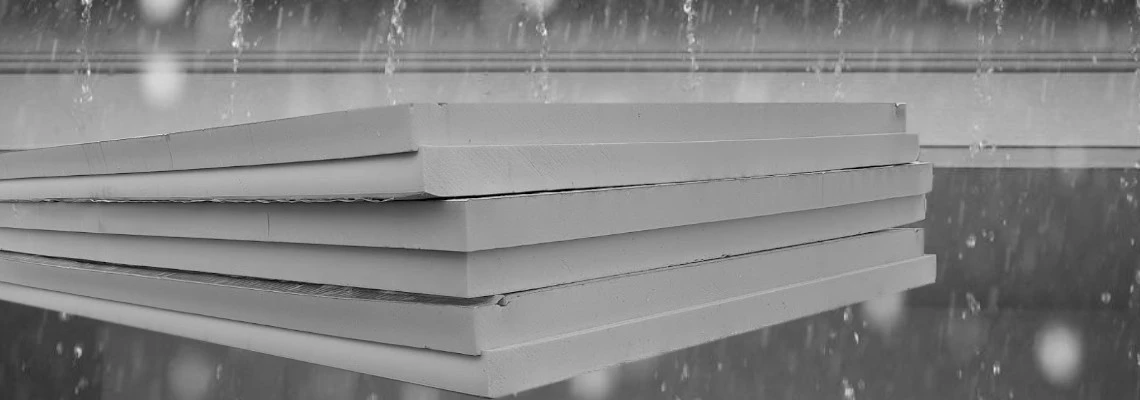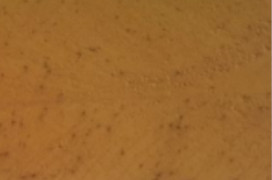
Is PIR foam insulation waterproof?*
Moisture intrusion poses a substantial threat to insulation, potentially leading to reduced effectiveness and a host of other issues such as mould growth and structural deterioration. Therefore, discerning the waterproofing capabilities of insulation materials is of utmost importance. Today, we embark on a quest to unravel a frequently pondered question: "Is PIR foam insulation truly waterproof?" With a keen focus on the keywords "PIR," "get wet," "what happens if," "Celotex," "left outside," "foam insulation," and "waterproof," we aim to provide you with a comprehensive understanding of the water resistance properties of PIR foam insulation.
WHAT HAPPENS IF PIR INSULATION GETS WET?
If you find yourself asking whether foam insulation such as Celotex, Xtratherm, or Kingspan can sustain damage when exposed to direct water contact, it's likely that you are considering placing the insulation in such conditions. Rest assured that foam insulation, such as Celotex, is designed to be highly resistant to water, making it one of the top choices for water-resistant insulation, second only to XPS insulation. Its cells are closed and densely packed, making it extremely difficult for water to penetrate the structure of PIR foam.
However, it is important to note that prolonged exposure to water can potentially damage the insulation, especially during repeated temperature fluctuations around freezing point. Continuing further, insulation such as Celotex, Xtratherm, Recticel, or Kingspan will be OK if it is soaked for a period shorter than 30 days. It should be understood that subsequent drying, often achieved by simply wiping off the water or allowing it to air dry, is necessary in such cases.
WHAT ARE THE IMPLICATIONS WHEN CELOTEX INSULATION IS EXPOSED TO WATER?
When it comes to the scenario of Celotex PIR insulation encountering water, it's essential to understand the potential consequences. Celotex, renowned for its high-quality foam insulation, is generally resistant to water and can withstand certain levels of moisture exposure.
It's important to note that prolonged or excessive water exposure may have adverse effects on its performance.
The cellular structure of Celotex insulation is designed to be predominantly closed-cell, which significantly inhibits water infiltration.

PIR structure
This characteristic makes it more resistant to water compared to other insulation materials such as mineral wool. Nevertheless, extended periods of immersion or continuous water contact can gradually compromise the insulation's effectiveness and structural integrity.
In situations where Celotex insulation gets wet, prompt action is crucial. Proper drying and ventilation should be employed to eliminate excess moisture and allow the insulation to return to its optimal state. If the moisture content remains high or the insulation shows signs of damage, it may be necessary to consider replacement or consult with insulation professionals to assess the situation accurately.
IS IT SUITABLE TO LEAVE PIR INSULATION EXPOSED TO OUTDOOR CONDITIONS?
PIR insulation such as Celotex, Recticel or Xtratherm like other insulation materials, is primarily designed for installation within enclosed and protected spaces. Leaving PIR insulation outside, directly exposed to the sunlight, can have consequences that need to be considered.
PIR insulation is known for its excellent thermal performance and moisture resistance. However, it's important to note that extended exposure to outdoor conditions, such as sunlight, rain, and temperature fluctuations, can potentially impact the insulation's effectiveness and longevity.
THE SUN: THE GREATEST ENEMY OF PIR INSULATION
 UV radiation from the sun can gradually degrade the surface of PIR insulation, leading to discoloration, embrittlement, and a decrease in its thermal performance over time.
UV radiation from the sun can gradually degrade the surface of PIR insulation, leading to discoloration, embrittlement, and a decrease in its thermal performance over time.
Direct exposure of PIR boards to the sun can not only change the colour of their edges but also significantly affect their susceptibility to crushing and weaken the core structure of the PIR foam. Therefore, it is not recommended to leave PIR boards outside, especially in hot climates. However, it is perfectly fine to leave PIR boards outside, even in intense sunlight, as long as they are covered with a protective layer such as a Corex or general OSB board. It is important to remember that the edges of PIR boards are the most vulnerable areas and should be adequately shielded from sunlight.
WATER – THE ULTIMATE DESTROYER OF PIR INSULATION
 While water may be harmless to humans, it is the worst enemy of insulation. Despite PIR's inherent water resistance, PIR insulation is not impervious to moisture.
While water may be harmless to humans, it is the worst enemy of insulation. Despite PIR's inherent water resistance, PIR insulation is not impervious to moisture.
As commonly known, even the best insulation can be destroyed by water. The same applies to PIR boards.
Leaving PIR foam insulation exposed to water for prolonged periods can cause permanent damage. In general, leaving PIR boards under the influence of water for more than 30 days can affect their thermal properties.
It is not uncommon to witness insulation replacement in attics due to a leaking roof. It is well understood that for any insulation, be it Celotex or mineral wool, to fulfil its function, it must be warm and, above all, dry.
We can easily compare it to walking in light rain. After a long walk in the rain, our clothes eventually become wet, and we start to feel cold. The same goes for PIR insulation.
ARE FOAM INSULATION SHEETS WATERPROOF?
Foam insulation sheets, such as those made from materials like PIR (polyisocyanurate) or XPS (extruded polystyrene), exhibit varying degrees of water resistance. While they are not completely waterproof, they do possess certain qualities that make them highly resistant to water penetration.
Both PIR and XPS insulation sheets have closed-cell structures, which means their cells are sealed, preventing water from easily infiltrating the foam. This characteristic makes them more resilient to water compared to other insulation materials like fibreglass.
However, continuous water contact or high levels of humidity can potentially lead to moisture absorption, compromising the insulation's thermal properties and structural integrity.
To ensure the best performance of foam insulation sheets, it is recommended to protect them from direct water exposure by implementing proper installation techniques and incorporating appropriate vapour barriers or water-resistant coatings. Additionally, promptly addressing any water leaks or moisture issues in the building envelope can help maintain the effectiveness of the insulation system.
CONCLUSION
Foam insulation sheets, such as PIR and XPS, are not completely waterproof but possess inherent water resistance due to their closed-cell structures. While they can withstand some degree of moisture without significant damage, prolonged exposure to water or excessive humidity can compromise their thermal performance and structural integrity over time.
Related articles:
THE INSULATION GAME: DON'T LET HEAT ESCAPE, WIN WITH PROPER INSULATION!
STEP-BY-STEP GUIDE: HOW TO INSTALL CELOTEX BOARD BETWEEN FLOOR JOISTS
THE TERRIFYING TRUTH ABOUT PIR AND WHY YOUR LIFE MAY BE AT RISK
*All the information provided in the content published on Insulationgo blog is for informational and educational purposes only. Insulationgo LTD makes every effort to ensure the accuracy and timeliness of the content, but we do not assume any responsibility for any errors or omissions.
The information presented on this blog should not be considered as professional advice or a substitute for consulting relevant experts. Before making any purchase decisions or taking action based on the information presented here, it is strongly recommended to contact the product manufacturer directly to verify the details and ensure its suitability for your specific needs.
By using this blog, you acknowledge and agree that Insulationgo LTD shall not be held liable for any damages, losses, or inconveniences arising from the use or reliance on the information provided herein. This limitation of liability applies to all users of the blog, including but not limited to visitors, readers, and subscribers.










































































































